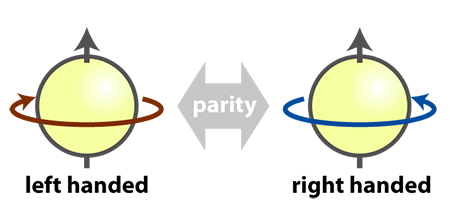Parity conservation is the physicist’s means of stating that nature’s laws are left-right symmetrical– that there is absolutely no advantage for left or right. This particular statement is usually illustrated with the assistance of the mirror test. Imagine that you are seeing some activity in a mirror. Assuming that nature is left-right symmetric, then anything that you observe in the mirror will be able to also occur in real life. This law had actually been unquestioned for hundred of years, yet questions began to emerge at the 1956 Rochester Conference on High-Energy Physics.
I happened to be sharing a room with a fellow named Martin Block, an experimenter. And one night he said to , ‘Why are you guys so insistent on this parity rule?’ I thought a minute and pointed out, ‘It would mean that nature’s laws are different for the right hand and the left hand’. The next day at the assembly, Oppenheimer mentioned, ‘We need to hear some new, wilder ideas about this problem.’ And so I stood up and said, ‘I’m asking this question for Martin Block: What would be the consequences if the parity rule was wrong?’… Lee, of Lee and Yang, answered something complicated and as usual I didn’t comprehend very well.– R. Feynman
T.D. Lee at Columbia University and C.N. Yang at the Princeton Institute for Advanced Studies were really the first to point out that there is no theoretical or experimental basis concerning the belief in left-right symmetry. They also proposed an experiment in order to test the symmetry. The experiment is really not hard to understand; all you have to understand is that nucleons, like photons, have spin. This spin causes the nucleon to be transformed into a teensy magnet in the exact same way that spinning electrons produce the magnetism in common magnets. It follows that in the case that a nucleon is set inside an external magnetic field, it will usually align itself along the field, just as a compass needle aligns itself along the earth’s magnetic field, except that the nuclear alignment force is undoubtedly much weaker. Yang and Lee’s suggestion was actually to examine a radioactive compound that releases beta rays and observe if the number of beta rays produced in a given direction continues to be the same when the nuclear spins switch their direction.
Lee and Yang’s proposed experiment was actually conducted at Columbia University by a team under the direction of another Chinese-American, Chien Shiung Wu, employing cobalt-60 as the beta-emitter. The sample was cooled almost to absolute zero to enhance the alignment and the nuclear spins were actually aligned utilizing an external magnetic field. The number of beta rays emitted upward were then counted, the magnetic field was altered to reverse the spin alignment and the radiation counted again. If parity is actually conserved, these counts should be the same.
Get your bets in! It goes without saying, interest was high in Wu’s experiment. Actually the physics community began to bear resemblance to an off-track betting window found at a race track. Yang and Abraham Pais each wagered a dollar that the result would most likely be left-right symmetrical. Wolfgang Pauli reached further, saying “I am ready to bet a very large sum that the experiments will give symmetric results”, and Feynman was literally ready to lay 50-to-1 odds on symmetry. (Subsequently he mentioned he was happy that he offered only 50-to-1.) Schwinger refused even to wager, saying “I could not accept that nature could be so mischievous as to destroy one of the symmetries”.
And the winner is … To everyone’s surprise, the number of beta rays transmitted up did change, depending on the path of spin, therefore violating the mirror test. Nature turned out to be not left-right symmetrical, at the very least when it concerns beta decay. And so everyone lost their bet but Lee and Yang won the 1957 Nobel Prize in physics. To the dissatisfaction of many, Dr. Wu was not included in the accolade.
Posted By: Rodney Brooks

